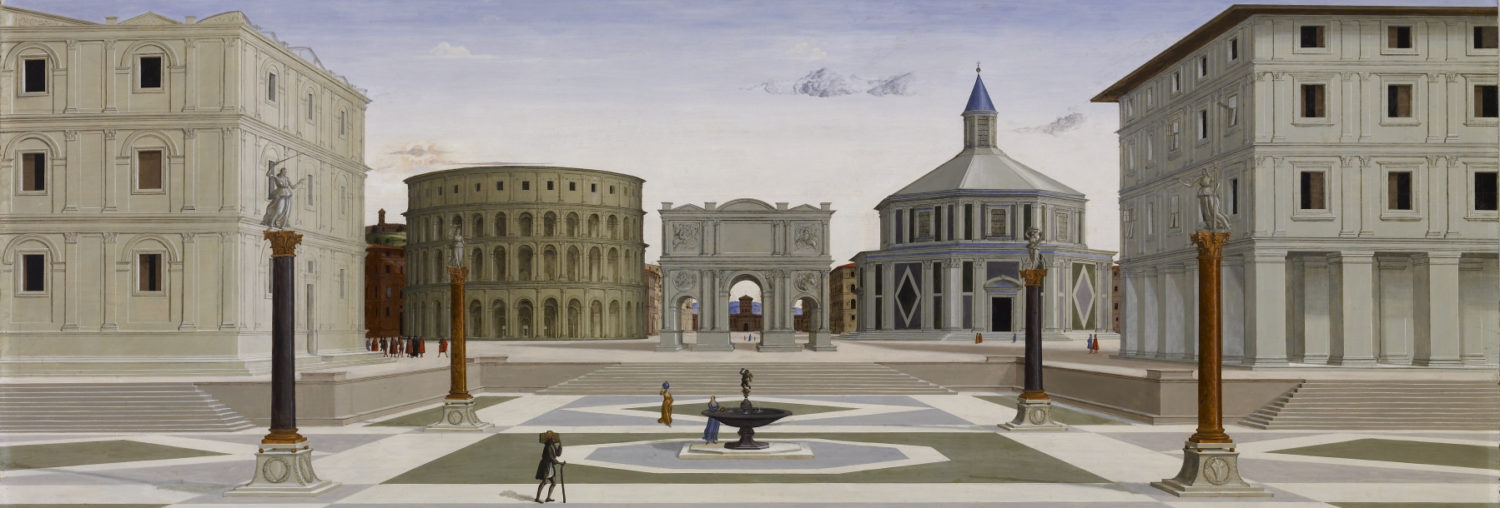This ceramic piece was created in 1990 by Eduardo Gil, an artist from Talavera who worked in Antonio Gonzalez Duran’s workshop. Talavera is very well-known for its ceramic artworks and these two people are some of the main craftsmen in the city. It represents the city of Talavera de la Reina (Toledo), located in the Northwest of Castilla-La Mancha. This ceramic piece depicts the city from the point of view of the outskirts, on the other side of the bridge over the Tajo River. Since that time, the city of Talavera has not undergone many urban changes.
Talavera is located in the West of Toledo province and its historical origin is Pre-Roman. The city is settled next to the Tajo River. A lot of different civilizations have been interested in Talavera since its creation. First, the Romans were amazed by its natural landscape and wanted to make this place their property; therefore, they called it Caesarobriga. Right after the Fall of the Roman Empire, the Visigoths conquered the city and left remains like the Villa del Saucedo. Finally, the Arabic kings thought that Talavera would be a good place to settle down, both due to the city location and the natural resources. Some historical testimonies and collections of samples can be admired at the ethnographic museum. It is located in Lagar de San Jerónimo, near the Convento Jerónimo.
Talavera has irregular urban layout due to the population increase in 1876. That is why there are some places that were constructed without a plan, but in later expansions to the east and the west, the buildings were constructed with a regular plan. The main economic source in this period of time was the manufacturing of ceramics, cotton mills and sewing circles. But nowadays, Talavera has some big factories and companies that export other products to the rest of the world. At the bottom of the picture, we can see the Tajo River, which, years ago, used to be a natural barrier of defense, and served as a supply for the people of the city. The river separates the city in two parts. In the upper part, we can see the entire city. However, in the lower part, which is not shown in this ceramic piece, we can see the outskirts without any constructions. The city expands from east to west, following the position of the river and another barrier, formed by a modern railway. In Talavera, we can find two bridges that connect the city and the outskirts. The bridge shown in the ceramic piece is the older one, known as the Puente Viejo. This bridge was constructed in the 15th century by Fray Pedro de los Molinos and it is believed to have been originally of Pre-Romanesque style. However, it has been renovated on several occasions. Its last restoration was carried out in 2002.
The two most important monuments in Talavera, which are shown in this ceramic piece, are the Colegiata de Santa María and the Convento Jerónimo de Santa Catalina (San Prudencio). The beauty of La Colegiata resides in its two chapels: the chapel of “Santa Ana” and the Chapel of “Cristo del Mar”. What is important about both chapels is that the chapel of Santa Ana is known for being the only chapel in Talavera that followed the Toledano’s gothic style, and the Chapel of Cristo del Mar is known for having ceramic relics made by Ruiz de Luna. On the other hand, the Convento Jerónimo, which was founded by Archbishop Don Pedro Tenorio in 1372, is a point of reference in the old quarter. This convent received the name of Santa Catalina due to Archbishop Tenorio’s great devotion to her. Finally, the Archbishop donated this convent to the Jerónimos de la Sisla friars in 1398.
Ángel Santos Rosa


I found it very interesting work, it´s incredible how Talavera de la Reina has evolved during the years. I have enjoyed reading it, because recently I have visited. Very good job!